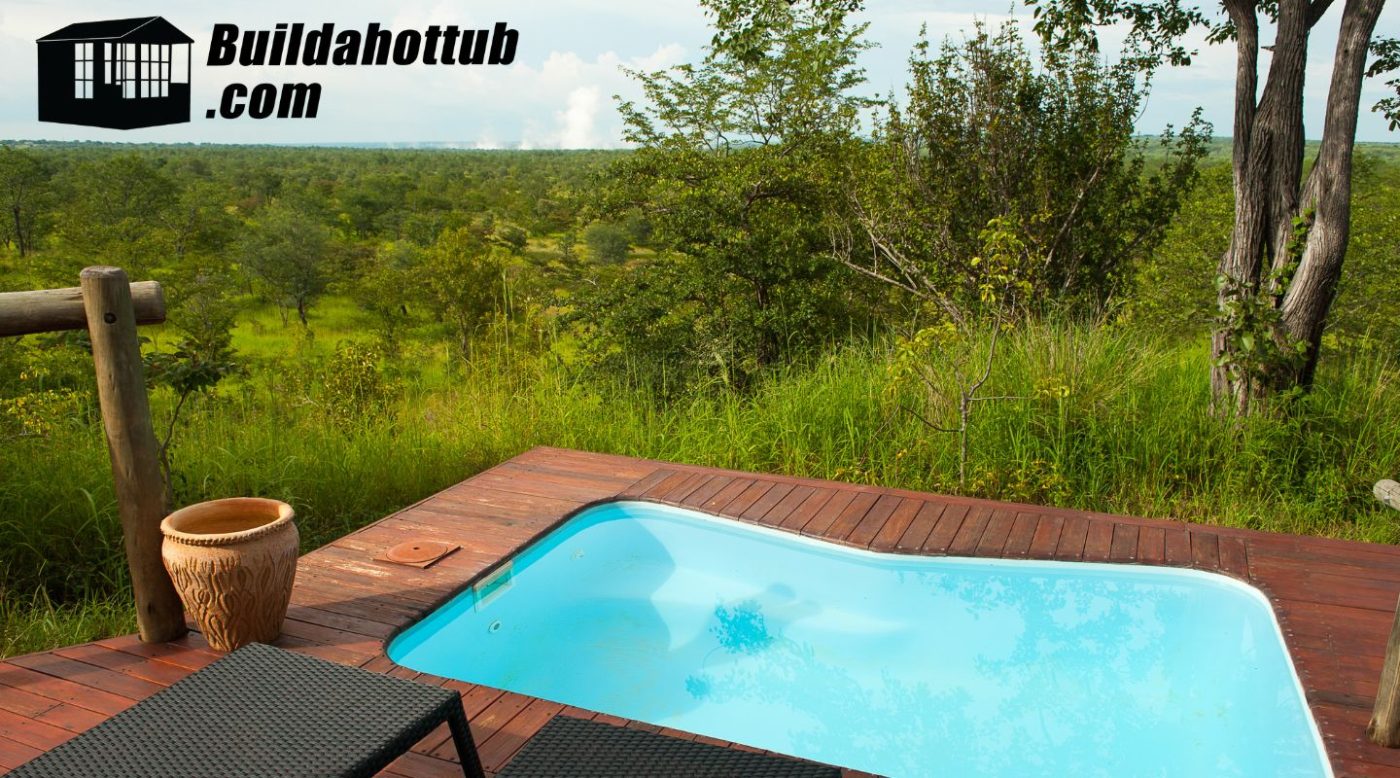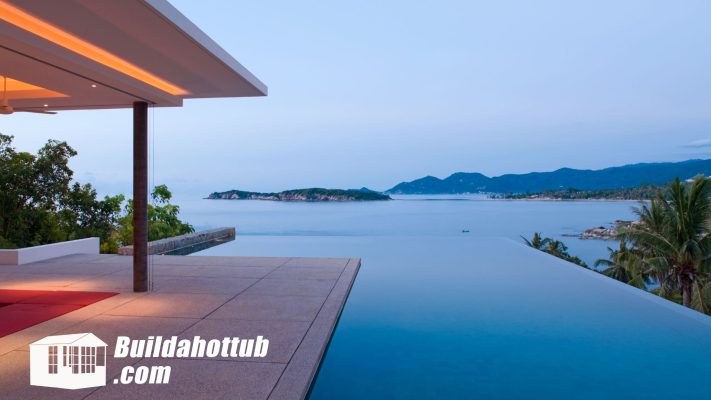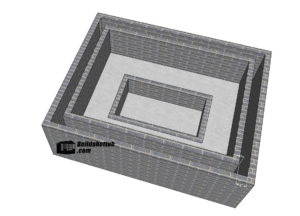Plunge pool? Yes please!
Plunge pools are small, deep pools that are typically used for a quick dip or to cool off. They are often popular additions to homes with limited space, as they do not require as much space as a traditional swimming pool. Plunge pools can also be used for hydrotherapy, as the cool water can help to relieve muscle pain and soreness.
One of the main benefits of having a plunge pool is that they are relatively low-maintenance. Unlike traditional swimming pools, which require regular cleaning and maintenance, plunge pools can be easily maintained with a few simple steps.
Additionally, plunge pools are energy-efficient, as they do not require as much water or heating as traditional swimming pools.
If you are considering adding a plunge pool to your home, there are a few things you need to know.
First, you need to determine the size and depth of the pool. Plunge pools can range in size from 4 feet to 10 feet in diameter, and they can be anywhere from 3 feet to 8 feet deep.
You will also need to decide where to locate your plunge pool. Plunge pools can be installed indoors or outdoors. If you are installing your plunge pool outdoors, you will need to make sure that it is in a location that receives full sun.
Additionally, you will need to protect your plunge pool from the elements, such as rain, snow, and debris.
Finally, you will need to decide how you will heat your plunge pool. Plunge pools can be heated using a variety of methods, including solar panels, heat pumps, and electric heaters.
Once you have made these decisions, you can start shopping for a plunge pool contractor. When selecting a contractor, be sure to ask for references and check their credentials.
In addition to the information above, here are some other things to keep in mind:
- Plunge pools can be a great addition to any home, but they are not for everyone. If you have small children, you will need to make sure that the pool is properly fenced in to prevent accidents.
- Plunge pools can be expensive to install, so it is important to budget accordingly.
Overall, plunge pools can be a great way to add some luxury and relaxation to your home. If you are considering adding a plunge pool to your home, be sure to do your research and choose a reputable contractor.
You can also find me on my socials;
What is a plunge pool?
A plunge pool is a small, deep pool that is typically used for a quick dip or to cool off. They are often popular additions to homes with limited space, as they do not require as much space as a traditional swimming pool. Plunge pools can also be used for hydrotherapy, as the cool water can help to relieve muscle pain and soreness.
Here are some of the key characteristics of a plunge pool:
- Size: Plunge pools are typically smaller than traditional swimming pools, ranging from 4 feet to 10 feet in diameter.
- Depth: Plunge pools are typically deeper than traditional swimming pools, ranging from 3 feet to 8 feet deep.
- Purpose: Plunge pools are primarily used for a quick dip or to cool off, rather than for swimming laps or playing water games.
- Location: Plunge pools can be installed indoors or outdoors.
- Heating: Plunge pools can be heated using a variety of methods, including solar panels, heat pumps, and electric heaters.
If you are considering adding a plunge pool to your home, there are a few things you need to know:
- Maintenance: Plunge pools require regular maintenance, including
cleaning, filtering, and checking the water chemistry. - Cost: Plunge pools can be expensive to install, depending on the size, depth, and features.
- Safety: Plunge pools should be properly fenced in to prevent accidents, especially if you have small children.
How much is a plunge pool?
The cost of a plunge pool can vary depending on a number of factors, including the size, depth, materials, features, and location. However, in general, you can expect to pay between $10,000 and $50,000 for a plunge pool.
Materials
The type of material used to construct the plunge pool will have a significant impact on the cost. Concrete plunge pools are the most expensive, typically costing between $20,000 and $50,000.
Fiberglass plunge pools are less expensive, typically costing between $10,000 and $25,000.
Vinyl liner plunge pools are the least expensive, typically costing between $5,000 and $15,000.
Features
The features of the plunge pool, such as heating, lighting, and water features, will also affect the cost.
Heating a plunge pool can add an additional $1,000 to $5,000 to the cost. Lighting can add an additional $500 to $1,000 to the cost.
Water features, such as waterfalls and fountains, can add an additional $1,000 to $3,000 to the cost.
Location
The location of the plunge pool will also affect the cost. Installing a plunge pool indoors will be more expensive than installing one outdoors, as it will require additional plumbing and electrical work.
The cost of installing a plunge pool can also vary depending on the location of your home. For example, plunge pools will typically be more expensive to install in areas with high labor costs.
Additional Costs
In addition to the cost of the pool itself, there are a few other costs to consider, such as:
- Permits: You may need to obtain a permit to install a plunge pool. The cost of a permit will vary depending on your location.
- Excavation: The cost of excavation will vary depending on the size and depth of the pool.
- Landscaping: You may need to do some landscaping around the pool, such as adding paving or planting trees.
Overall
The total cost of a plunge pool can range from $10,000 to $50,000 or more. The exact cost will depend on a number of factors, including the size, depth, materials, features, and location of the pool.
How big is a plunge pool?
Plunge pools are typically smaller than traditional swimming pools, ranging from 4 feet to 10 feet in diameter. They are typically deeper than traditional swimming pools, ranging from 3 feet to 8 feet deep.
Plunge pools are primarily used for a quick dip or to cool off, rather than for swimming laps or playing water games.
Here is a table summarizing the typical dimensions of plunge pools:
|
Feature |
Range |
|
Diameter |
4 feet to 10 feet |
|
Depth |
3 feet to 8 feet |
Of course, there is no one-size-fits-all answer to the question of how big a plunge pool should be.
The ideal size for you will depend on your individual needs and preferences. If you are not sure what size is right for you, it is always a good idea to consult with a pool expert.
They can help you assess your needs and recommend the best size for your pool.
Can I build my own plunge pool?

Building your own plunge pool can be a DIY project if you have the necessary skills and experience. However, it is a challenging project that can be time-consuming and expensive.
If you do decide to build your own plunge pool, there are a few things you need to keep in mind:
- Planning: Careful planning is essential for any DIY project, and building a plunge pool is no exception. You will need to develop a detailed plan that includes the size, depth, and materials of the pool, as well as the location and features.
- Permits: You may need to obtain a permit to build a plunge pool. The cost of a permit will vary depending on your location.
- Excavation: The cost of excavation will vary depending on the size and depth of the pool.
- Materials: The cost of materials will vary depending on the type of materials you choose. Concrete plunge pools are the most expensive, fiberglass plunge pools are less expensive, and vinyl liner plunge pools are the least expensive.
- Plumbing: Plumbing is a critical component of any pool, and it is important to make sure that it is installed correctly. If you are not comfortable with plumbing, it is a good idea to hire a professional to install it.
- Electrical: Electrical work is also important for any pool, and it is important to make sure that it is installed correctly. If you are not comfortable with electrical work, it is a good idea to hire a professional to install it.
- Surrounding area: You will need to do some landscaping around the pool, such as adding paving or planting trees.
What are the health benefits of a plunge pool?
Plunge pools offer a variety of health benefits, making them a worthwhile investment for those seeking to enhance their well-being. Here are some of the notable health advantages associated with plunge pools:
- Enhanced Circulation: Immerse yourself in the cool waters of a plunge pool to invigorate your circulatory system. The contrast between the cool water and your body temperature triggers a rush of blood to the surface, followed by a return to deeper tissues. This process, known as “vascular gymnastics,” improves blood flow, promoting overall cardiovascular health.
- Reduced Muscle Soreness: After a strenuous workout, soothe your aching muscles with a dip in a plunge pool. The cool water helps to constrict blood vessels, reducing inflammation and minimizing muscle soreness. This therapeutic effect can accelerate recovery and promote faster healing.
- Mood Enhancement: Embrace the revitalizing power of cold water therapy. Immersing yourself in a plunge pool triggers the release of endorphins, the body’s natural mood boosters. These endorphins combat stress, elevate mood, and promote a sense of relaxation and well-being.
- Immune System Boost: Immerse yourself in the cool waters of a plunge pool to stimulate your immune system. The cold exposure triggers the production of white blood cells, the body’s defence against infections. This increased production can strengthen your immune system and enhance your overall resilience to illness.
- Pain Relief: Seek relief from chronic pain through the therapeutic effects of a plunge pool. The cool water’s anti-inflammatory properties can help reduce pain associated with conditions like arthritis, muscle aches, and joint pain. Regular immersion can improve mobility and quality of life.
- Skin Health Enhancement: Embrace the rejuvenating effects of cold water on your skin. The cool water helps to tighten pores, reduce inflammation, and promote better circulation to the skin. This can lead to a healthier, more radiant complexion.
- Sleep Improvement: Establish a pre-sleep routine that includes a dip in your plunge pool. The combination of cool water immersion and reduced stress levels can promote a sense of calm and relaxation, preparing your body for a more restful night’s sleep.
- Weight Management: Incorporate plunge pool sessions into your weight management routine. The cool water exposure can increase metabolism and stimulate calorie burning, potentially aiding in weight loss efforts.
- Stress Reduction: Escape the daily grind and immerse yourself in the tranquillity of your plunge pool. The cool water and serene environment can effectively reduce stress, promote relaxation, and enhance mental clarity.
- Overall Well-being: Embrace the holistic benefits of plunge pool therapy. Regularly immersing yourself in cool water can contribute to improved physical and mental health, leading to a heightened sense of overall well-being.
What do I need to do to balance the water chemistry in a plunge pool?
Balancing the water chemistry in a plunge pool is essential for maintaining a healthy and safe swimming environment. Here’s a step-by-step guide to help you achieve proper water balance:
- Gather the Necessary Tools and Supplies:
- Pool water test kit: This kit will allow you to measure various water chemistry parameters, including pH, alkalinity, calcium hardness, and sanitizer levels.
- Chemicals: Based on the test results, you may need to add or adjust the levels of various chemicals, such as pH increaser or decreaser, alkalinity increaser or decreaser, sanitizer (chlorine or bromine), and stabilizer (cyanuric acid).
- Test the Pool Water:
- Follow the instructions provided with your pool water test kit to test the water for pH, alkalinity, calcium hardness, and sanitizer levels.
- Record the test results on a pool chemistry log sheet to track changes over time.
- Balance the pH:
- Ideal pH range for a plunge pool is between 7.2 and 7.8. If the pH is too low (acidic), use pH increaser. If the pH is too high (alkaline), use pH decreaser.
- Add the recommended amount of chemical gradually, retesting the water after each addition until the desired pH range is reached.
- Adjust Alkalinity:
- Ideal alkalinity range for a plunge pool is between 80 and 120 ppm. If the alkalinity is too low, use alkalinity increaser. If the alkalinity is too high, the only remedy is to partially drain and refill the pool.
- Add the recommended amount of chemical gradually, retesting the water after each addition until the desired alkalinity range is reached.
- Maintain Calcium Hardness:
- Ideal calcium hardness range for a plunge pool is between 200 and 400 ppm. If the calcium hardness is too low, use calcium hardness increaser. If the calcium hardness is too high, the only remedy is to partially drain and refill the pool.
- Add the recommended amount of chemical gradually, retesting the water after each addition until the desired calcium hardness range is reached.
- Sanitize the Pool Water:
- Use a sanitizer, such as chlorine or bromine, to eliminate bacteria and prevent the growth of algae.
- Maintain the sanitizer level within the recommended range, typically between 3 and 5 ppm for chlorine and 4 to 6 ppm for bromine.
- Stabilize Cyanuric Acid:
- Cyanuric acid, also known as pool stabilizer, protects chlorine from the sun’s UV rays.
- Maintain the cyanuric acid level between 30 and 50 ppm.
- Regularly Monitor Water Chemistry:
- Test the pool water weekly or more frequently if the pool is heavily used.
- Make adjustments to the chemical levels as needed to maintain proper water balance.
Remember, maintaining proper water chemistry in a plunge pool is essential for preventing corrosion, scaling, and algae growth. Regularly testing and adjusting the water chemistry will ensure a safe and enjoyable swimming experience.
Can I help you build your own plunge pool?
With the right plans, designs, parts and information I can help you build your own DIY plunge pool. It will cost a fraction of what a pool and spa builder will charge you and be equally as good!
My designs are tried and tested and with over 1000 customers building their own hot tubs and plunge pools, I know I can help you!
Check out the case studies on the website to learn when people just like you have build.
Can I Help You?
If I can help you in any way I would love to hear from you. You can get in touch using the form below.
Thanks - Andi
 Hi, Andi here. I own Buildahottub.com and also write all of the articles and info pages on the site. Some years back now, I built my own hot tub but struggled to find the information I needed. So, once my tub was complete, I started this website to help others in their own pursuit of hot tub and plunge pools DIY building information.
Hi, Andi here. I own Buildahottub.com and also write all of the articles and info pages on the site. Some years back now, I built my own hot tub but struggled to find the information I needed. So, once my tub was complete, I started this website to help others in their own pursuit of hot tub and plunge pools DIY building information.
Fast forward to 2025, I've helped over 1400+ DIY customers just like you all over the world build hot tubs and pools. Have a good look around the site, there are lots of resources here. Please do get in touch if I can help you. - Cheers, Andi
















